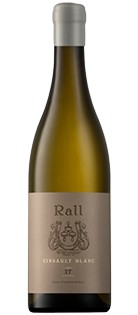Tim James: The changing shape of the Cape vineyard this century
By Christian Eedes, 3 September 2018
I’ve been pondering what’s been happening to the shape of the Cape’s vineyard in the 21st century. Not the rather significant overall annual decline in extent since 2006 (while production was increasing – for observations on that puzzle see here); but rather the relative plantings of various grape varieties. Some of the statistics might interest others too, I thought (ever hopeful as I am), so here goes.
Actually, I was most prodded into this by getting a notice about a proposed addition of cinsaut blanc to the list of varieties allowed for the production of wine in South Africa. My surprise wasn’t because of the rarity of this mutation of cinsaut, but because I knew that there was already a wine made from it – as will assiduous readers of this website who saw Christian Eedes’s review of Donovan Rall’s Cinsault Blanc 2017.That wine was fully labelled and certified, and Donovan told me he hadn’t had any trouble with the process.
In fact it’s rather puzzling – the Regulations, updated earlier this year, do in fact list cinsaut blanc – and cinsaut gris, presumably a sort of halfway mutation, which I’d never heard of – as well as good old standard cinsaut. According to the SAWIS list of planted varieties as at the end of 2017, there’s just 0.2 hectares of the blanc (in Wellington it is, and Donovan takes it all), and a comparatively massive amount of cinsaut gris: all of 1.5 ha. No idea where that is.
Varieties come and go on this list of what’s planted (and not all of them are in the Regulations’ list of permitted varieties). The list for 2000 included 13 varieties with zero plantings – including cinsaut gris, interestingly, which presumably means that someone planted it since then. But such viticultural splendours as keuka, perricone, cserszegi fusz and brakboseiland have disappeared from the 2017 list. (Oh, how I wish Adi Badenhorst could make a wine from brakboseiland – no-one else could do it justice, I’m sure.). It looks likely that kerner and schonburger will be next to disappear, as they make no contribution to the current total vineyard area (94 544.60 hectares if you were wondering).
What is possibly exciting news is that the number of varieties planted at the end of 2017 (101) is substantially up on the number at the turn of the century (81). So if you’re getting a bit bored with chenin, sauvignon blanc, cab, etc, you could start looking out for such promising Mediterranean varieties as nero d’Avola, bourboulenc and agiorgitiko, though the plantings are still minuscule. However, a few significant varieties that weren’t around in 2000 have now got vaguely meaningful hectarages: marsanne, for example (20.21 ha) and alvarinho (14.95). I see that, rather bizarrely, durif (petite sirah) has increased from a mere few rows in 2000 to 154.2 hectares in 2017 – just ahead of riesling, plantings of which have slumped.
On this 2017 list of 101 planted varieties, only 37 have 100 hectares or more – in the whole of the country, remember; it’s not a lot. Carignan, touriga nacional and gewürztraminer are the bottom three on the positive side of that point; tempranillo, morio muscat and roussanne the top three below 100 ha.
At the very top of the list, things haven’t changed all that much since 2000. The international big five and a few traditional local specialities rule. The top 20 varieties have swopped positions a little, but the only real change is that crouchen (notoriously once better known here as riesling and now sadly still permitted to call itself Cape riesling) has fallen out, and mourvèdre (mataro is the preferred name for some bizarre reason) has crept in, just above nouvelle. The top four are depressingly identical in 2010 and 2017: chenin, colombar, cabernet sauvignon, shiraz/syrah. In fifth place now is sauvignon blanc; back then it was chardonnay, which has now slipped back to seventh place, also behind resurgent pinotage.
Talking of nouvelle (for no longer than strictly necessary), it and roobernet are, as far as I know, the only varieties in the top 20 that never appear as names on a label. They’re not the only native crossings, of course, as there’s also pinotage. An interesting point, that, it suddenly occurs to me. Outside Europe, where Vitis vinifera vines are indigenous, I bet there’s no other country that has home-developed crossings in their top 20s. Should we be proud of that, and pleased? Probably. Nice to be a little different.
- Tim James is one of South Africa’s leading wine commentators, contributing to various local and international wine publications. He is a taster (and associate editor) for Platter’s. His book Wines of South Africa – Tradition and Revolution appeared in 2013.









Comments
0 comment(s)
Please read our Comments Policy here.